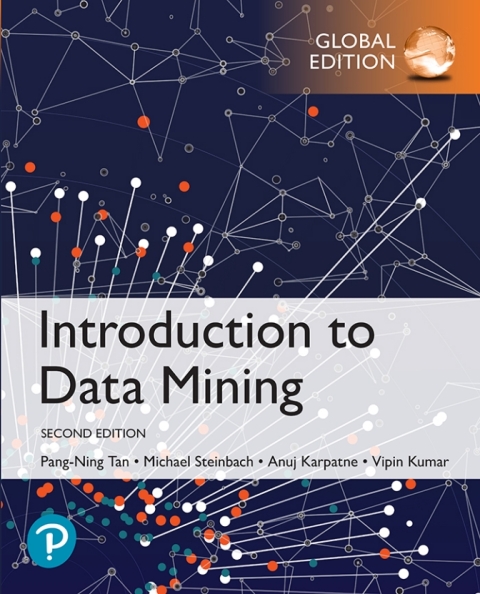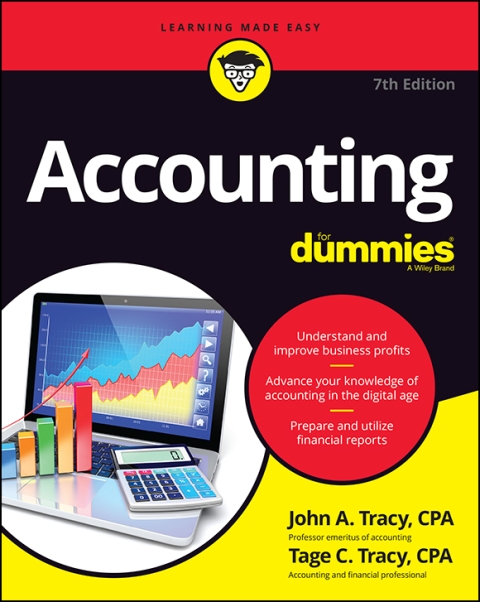Description
Efnisyfirlit
- Title Page
- Copyright Page
- Dedication
- Preface to the Second Edition
- Contents
- 1 Introduction
- 1.1 What Is Data Mining?
- 1.2 Motivating Challenges
- 1.3 the Origins of Data Mining
- 1.4 Data Mining Tasks
- 1.5 Scope and Organization of the Book
- 1.6 Bibliographic Notes
- 1.7 Exercises
- 2 Data
- 2.1 Types of Data
- 2.1.1 Attributes and Measurement
- 2.1.2 Types of Data Sets
- 2.2 Data Quality
- 2.2.1 Measurement and Data Collection Issues
- 2.2.2 Issues Related to Applications
- 2.3 Data Preprocessing
- 2.3.1 Aggregation
- 2.3.2 Sampling
- 2.3.3 Dimensionality Reduction
- 2.3.4 Feature Subset Selection
- 2.3.5 Feature Creation
- 2.3.6 Discretization and Binarization
- 2.3.7 Variable Transformation
- 2.4 Measures of Similarity and Dissimilarity
- 2.4.1 Basics
- 2.4.2 Similarity and Dissimilarity Between Simple Attributes
- 2.4.3 Dissimilarities Between Data Objects
- 2.4.4 Similarities Between Data Objects
- 2.4.5 Examples of Proximity Measures
- 2.4.6 Mutual Information
- 2.4.7 Kernel Functions*
- 2.4.8 Bregman Divergence*
- 2.4.9 Issues in Proximity Calculation
- 2.4.10 Selecting the Right Proximity Measure
- 2.5 Bibliographic Notes
- 2.6 Exercises
- 3 Classification: Basic Concepts and Techniques
- 3.1 Basic Concepts
- 3.2 General Framework for Classification
- 3.3 Decision Tree Classifier
- 3.3.1 A Basic Algorithm to Build a Decision Tree
- 3.3.2 Methods for Expressing Attribute Test Conditions
- 3.3.3 Measures for Selecting an Attribute Test Condition
- 3.3.4 Algorithm for Decision Tree Induction
- 3.3.5 Example Application: Web Robot Detection
- 3.3.6 Characteristics of Decision Tree Classifiers
- 3.4 Model Overfitting
- 3.4.1 Reasons for Model Overfitting
- 3.5 Model Selection
- 3.5.1 Using a Validation Set
- 3.5.2 Incorporating Model Complexity
- 3.5.3 Estimating Statistical Bounds
- 3.5.4 Model Selection for Decision Trees
- 3.6 Model Evaluation
- 3.6.1 Holdout Method
- 3.6.2 Cross-validation
- 3.7 Presence of Hyper-parameters
- 3.7.1 Hyper-parameter Selection
- 3.7.2 Nested Cross-validation
- 3.8 Pitfalls of Model Selection and Evaluation
- 3.8.1 Overlap Between Training and Test Sets
- 3.8.2 Use of Validation Error as Generalization Error
- 3.9 Model Comparison*
- 3.9.1 Estimating the Confidence Interval for Accuracy
- 3.9.2 Comparing the Performance of Two Models
- 3.10 Bibliographic Notes
- 3.11 Exercises
- 4 Association Analysis: Basic Concepts and Algorithms
- 4.1 Preliminaries
- 4.2 Frequent Itemset Generation
- 4.2.1 The Apriori Principle
- 4.2.2 Frequent Itemset Generation in the Algorithm
- 4.2.3 Candidate Generation and Pruning
- 4.2.4 Support Counting
- 4.2.5 Computational Complexity
- 4.3 Rule Generation
- 4.3.1 Confidence-based Pruning
- 4.3.2 Rule Generation in Algorithm
- 4.3.3 an Example: Congressional Voting Records
- 4.4 Compact Representation of Frequent Itemsets
- 4.4.1 Maximal Frequent Itemsets
- 4.4.2 Closed Itemsets
- 4.5 Alternative Methods for Generating Frequent Itemsets*
- 4.6 FP-Growth Algorithm*
- 4.6.1 FP-Tree Representation
- 4.6.2 Frequent Itemset Generation in FP-Growth Algorithm
- 4.7 Evaluation of Association Patterns
- 4.7.1 Objective Measures of Interestingness
- 4.7.2 Measures Beyond Pairs of Binary Variables
- 4.7.3 Simpson’s Paradox
- 4.8 Effect of Skewed Support Distribution
- 4.9 Bibliographic Notes
- 4.10 Exercises
- 5 Cluster Analysis: Basic Concepts and Algorithms
- 5.1 Overview
- 5.1.1 What Is Cluster Analysis?
- 5.1.2 Different Types of Clusterings
- 5.1.3 Different Types of Clusters
- Road Map
- 5.2 K-means
- 5.2.1 The Basic K-means Algorithm
- 5.2.2 K-means: Additional Issues
- 5.2.3 Bisecting K-means
- 5.2.4 K-means and Different Types of Clusters
- 5.2.5 Strengths and Weaknesses
- 5.2.6 K-means as an Optimization Problem
- 5.3 Agglomerative Hierarchical Clustering
- 5.3.1 Basic Agglomerative Hierarchical Clustering Algorithm
- 5.3.2 Specific Techniques
- 5.3.3 The Lance-williams Formula for Cluster Proximity
- 5.3.4 Key Issues in Hierarchical Clustering
- 5.3.5 Outliers
- 5.3.6 Strengths and Weaknesses
- 5.4 DBSCAN
- 5.4.1 Traditional Density: Center-based Approach
- 5.4.2 The Dbscan Algorithm
- 5.4.3 Strengths and Weaknesses
- 5.5 Cluster Evaluation
- 5.5.1 Overview
- 5.5.2 Unsupervised Cluster Evaluation Using Cohesion and Separation
- 5.5.3 Unsupervised Cluster Evaluation Using the Proximity Matrix
- 5.5.4 Unsupervised Evaluation of Hierarchical Clustering
- 5.5.5 Determining the Correct Number of Clusters
- 5.5.6 Clustering Tendency
- 5.5.7 Supervised Measures of Cluster Validity
- 5.5.8 Assessing the Significance of Cluster Validity Measures
- 5.5.9 Choosing a Cluster Validity Measure
- 5.6 Bibliographic Notes
- 5.7 Exercises
- 6 Classification: Alternative Techniques
- 6.1 Types of Classifiers
- 6.2 Rule-Based Classifier
- 6.2.1 How a Rule-Based Classifier Works
- 6.2.2 Properties of a Rule Set
- 6.2.3 Direct Methods for Rule Extraction
- 6.2.4 Indirect Methods for Rule Extraction
- 6.2.5 Characteristics of Rule-Based Classifiers
- 6.3 Nearest Neighbor Classifiers
- 6.3.1 Algorithm
- 6.3.2 Characteristics of Nearest Neighbor Classifiers
- 6.4 Na¨ive Bayes Classifier
- 6.4.1 Basics of Probability Theory
- 6.4.2 Na¨ive Bayes Assumption
- 6.5 Bayesian Networks
- 6.5.1 Graphical Representation
- 6.5.2 Inference and Learning
- 6.5.3 Characteristics of Bayesian Networks
- 6.6 Logistic Regression
- 6.6.1 Logistic Regression as a Generalized Linear Model
- 6.6.2 Learning Model Parameters
- 6.6.3 Characteristics of Logistic Regression
- 6.7 Artificial Neural Network (ann)
- 6.7.1 Perceptron
- 6.7.2 Multi-layer Neural Network
- 6.7.3 Characteristics of Ann
- 6.8 Deep Learning
- 6.8.1 Using Synergistic Loss Functions
- 6.8.2 Using Responsive Activation Functions
- 6.8.3 Regularization
- 6.8.4 Initialization of Model Parameters
- 6.8.5 Characteristics of Deep Learning
- 6.9 Support Vector Machine (svm)
- 6.9.1 Margin of a Separating Hyperplane
- 6.9.2 Linear SVM
- 6.9.3 Soft-margin SVM
- 6.9.4 Nonlinear SVM
- 6.9.5 Characteristics of SVM
- 6.10 Ensemble Methods
- 6.10.1 Rationale for Ensemble Method
- 6.10.2 Methods for Constructing an Ensemble Classifier
- 6.10.3 Bias-Variance Decomposition
- 6.10.4 Bagging
- 6.10.5 Boosting
- 6.10.6 Random Forests
- 6.10.7 Empirical Comparison Among Ensemble Methods
- 6.11 Class Imbalance Problem
- 6.11.1 Building Classifiers with Class Imbalance
- 6.11.2 Evaluating Performance with Class Imbalance
- 6.11.3 Finding an Optimal Score Threshold
- 6.11.4 Aggregate Evaluation of Performance
- 6.12 Multiclass Problem
- 6.13 Bibliographic Notes
- 6.14 Exercises
- 7 Association Analysis: Advanced Concepts
- 7.1 Handling Categorical Attributes
- 7.2 Handling Continuous Attributes
- 7.2.1 Discretization-Based Methods
- 7.2.2 Statistics-Based Methods
- 7.2.3 Non-Discretization Methods
- 7.3 Handling a Concept Hierarchy
- 7.4 Sequential Patterns
- 7.4.1 Preliminaries
- 7.4.2 Sequential Pattern Discovery
- 7.4.3 Timing Constraints*
- 7.4.4 Alternative Counting Schemes*
- 7.5 Subgraph Patterns
- 7.5.1 Preliminaries
- 7.5.2 Frequent Subgraph Mining
- 7.5.3 Candidate Generation
- 7.5.4 Candidate Pruning
- 7.5.5 Support Counting
- 7.6 Infrequent Patterns*
- 7.6.1 Negative Patterns
- 7.6.2 Negatively Correlated Patterns
- 7.6.3 Comparisons Among Infrequent Patterns, Negative Patterns, and Negatively Correlated Patterns
- 7.6.4 Techniques for Mining Interesting Infrequent Patterns
- 7.6.5 Techniques Based on Mining Negative Patterns
- 7.6.6 Techniques Based on Support Expectation
- 7.7 Bibliographic Notes
- 7.8 Exercises
- 8 Cluster Analysis: Additional Issues and Algorithms
- 8.1 Characteristics of Data, Clusters, and Clustering Algorithms
- 8.1.1 Example: Comparing K-means and Dbscan
- 8.1.2 Data Characteristics
- 8.1.3 Cluster Characteristics
- 8.1.4 General Characteristics of Clustering Algorithms
- Road Map
- 8.2 Prototype-based Clustering
- 8.2.1 Fuzzy Clustering
- 8.2.2 Clustering Using Mixture Models
- 8.2.3 Self-organizing Maps (SOM)
- 8.3 Density-Based Clustering
- 8.3.1 Grid-Based Clustering
- 8.3.2 Subspace Clustering
- 8.3.3 Denclue: A Kernel-Based Scheme for Density-based Clustering
- 8.4 Graph-Based Clustering
- 8.4.1 Sparsification
- 8.4.2 Minimum Spanning Tree (MST) Clustering
- 8.4.3 Opossum: Optimal Partitioning of Sparse Similarities Using Metis
- 8.4.4 Chameleon: Hierarchical Clustering with Dynamic Modeling
- 8.4.5 Spectral Clustering
- 8.4.6 Shared Nearest Neighbor Similarity
- 8.4.7 the Jarvis-patrick Clustering Algorithm
- 8.4.8 SNN Density
- 8.4.9 SNN Density-Based Clustering
- 8.5 Scalable Clustering Algorithms
- 8.5.1 Scalability: General Issues and Approaches
- 8.5.2 Birch
- 8.5.3 Cure
- 8.6 Which Clustering Algorithm?
- 8.7 Bibliographic Notes
- 8.8 Exercises
- 9 Anomaly Detection
- 9.1 Characteristics of Anomaly Detection Problems
- 9.1.1 A Definition of an Anomaly
- 9.1.2 Nature of Data
- 9.1.3 How Anomaly Detection is Used
- 9.2 Characteristics of Anomaly Detection Methods
- 9.3 Statistical Approaches
- 9.3.1 Using Parametric Models
- 9.3.2 Using Non-Parametric Models
- 9.3.3 Modeling Normal and Anomalous Classes
- 9.3.4 Assessing Statistical Significance
- 9.3.5 Strengths and Weaknesses
- 9.4 Proximity-Based Approaches
- 9.4.1 Distance-Based Anomaly Score
- 9.4.2 Density-Based Anomaly Score
- 9.4.3 Relative Density-Based Anomaly Score
- 9.4.4 Strengths and Weaknesses
- 9.5 Clustering-Based Approaches
- 9.5.1 Finding Anomalous Clusters
- 9.5.2 Finding Anomalous Instances
- 9.5.3 Strengths and Weaknesses
- 9.6 Reconstruction-Based Approaches
- 9.6.1 Strengths and Weaknesses
- 9.7 One-Class Classification
- 9.7.1 Use of Kernels
- 9.7.2 The Origin Trick
- 9.7.3 Strengths and Weaknesses
- 9.8 Information Theoretic Approaches
- 9.8.1 Strengths and Weaknesses
- 9.9 Evaluation of Anomaly Detection
- 9.10 Bibliographic Notes
- 9.11 Exercises
- 10 Avoiding False Discoveries
- 10.1 Preliminaries: Statistical Testing
- 10.1.1 Significance Testing
- 10.1.2 Hypothesis Testing
- 10.1.3 Multiple Hypothesis Testing
- 10.1.4 Pitfalls in Statistical Testing
- 10.2 Modeling Null and Alternative Distributions
- 10.2.1 Generating Synthetic Data Sets
- 10.2.2 Randomizing Class Labels
- 10.2.3 Resampling Instances
- 10.2.4 Modeling the Distribution of the Test Statistic
- 10.3 Statistical Testing for Classification
- 10.3.1 Evaluating Classification Performance
- 10.3.2 Binary Classification as Multiple Hypothesis Testing
- 10.3.3 Multiple Hypothesis Testing in Model Selection
- 10.4 Statistical Testing for Association Analysis
- 10.4.1 Using Statistical Models
- 10.4.2 Using Randomization Methods
- 10.5 Statistical Testing for Cluster Analysis
- 10.5.1 Generating a Null Distribution for Internal Indices
- 10.5.2 Generating a Null Distribution for External Indices
- 10.5.3 Enrichment
- 10.6 Statistical Testing for Anomaly Detection
- 10.7 Bibliographic Notes
- 10.8 Exercises
- Author Index
- Subject Index
- Copyright Permissions
- Back Cover





